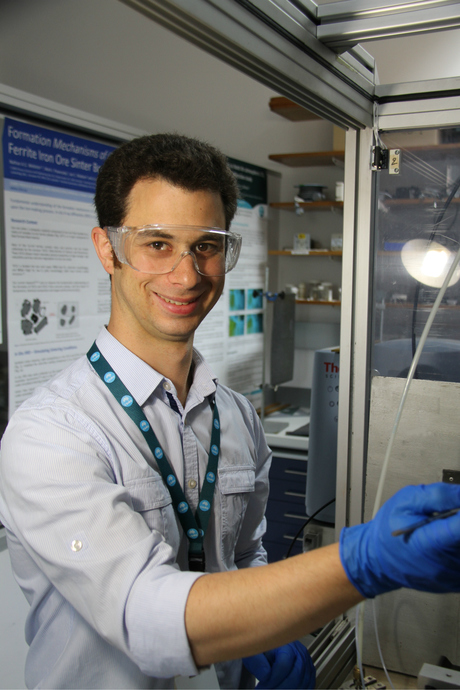Designer crystals for more powerful electronics

A new process to grow designer crystals, known as 'metal organic frameworks' or MOFs, could lead to a new breed of faster, more powerful electronic devices. The process uses vapour — rather than liquid — to grow crystals.
“Just like your smartphone doesn't like being dropped in water, electronic devices don't like the liquid solvent that's used to grow MOF crystals," said CSIRO researcher Mark Styles.
While crystals could significantly boost the processing power of microelectronics, until now they could only be grown and applied using a liquid solvent, making them unsuitable for electronics applications.
The method, invented by an international team of scientists from CSIRO, the University of Leuven in Belgium and the National University of Singapore, has been published today in the journal Nature Materials.
“On the atomic scale, MOF crystals look like bird cages that can be tailor made to be different shapes and sizes.
“They have an extremely large surface area, meaning they can be up to 80% empty inside," said Styles.
“The net result is a structure where almost every atom is exposed to empty space: one gram of MOF crystals has a surface area of over 5000 square metres — that's the size of a football field.
“Crucially, we can use this vast space to trap other molecules, which can change the properties of a material.
“In the case of electronics, this means we can fit a lot more transistors on a microchip, making it faster and far more powerful."
The international team, which was led by Ivo Stassen and Professor Rob Ameloot from the University of Leuven in Belgium, drew on specialist X-ray analysis techniques from CSIRO and the Australian Synchrotron to understand how the vapour process works, and how it can be used to grow the MOF crystals.
According to Dr Styles, the applications for MOFs are only be limited by your imagination.
“Another potential use for this technology would be in portable chemical sensing devices that could be used in hazardous environments such as chemical processing plants and underground mines," he said
Hidden semiconductor activity spotted by researchers
Researchers have discovered that the material that a semiconductor chip device is built on,...
3D reflectors help boost data rate in wireless communications
Cornell researchers have developed a semiconductor chip that will enable smaller devices to...
Scientists revolutionise wireless communication with 3D processors
Scientists have developed a method for using semiconductor technology to manufacture processors...










